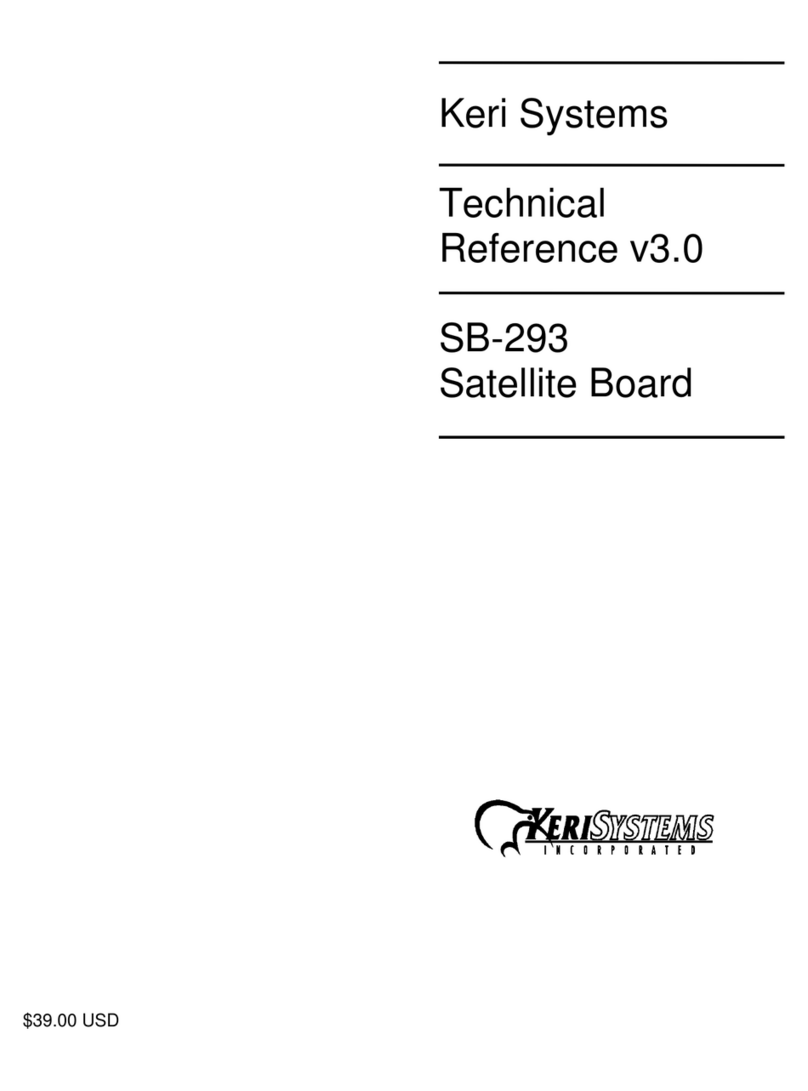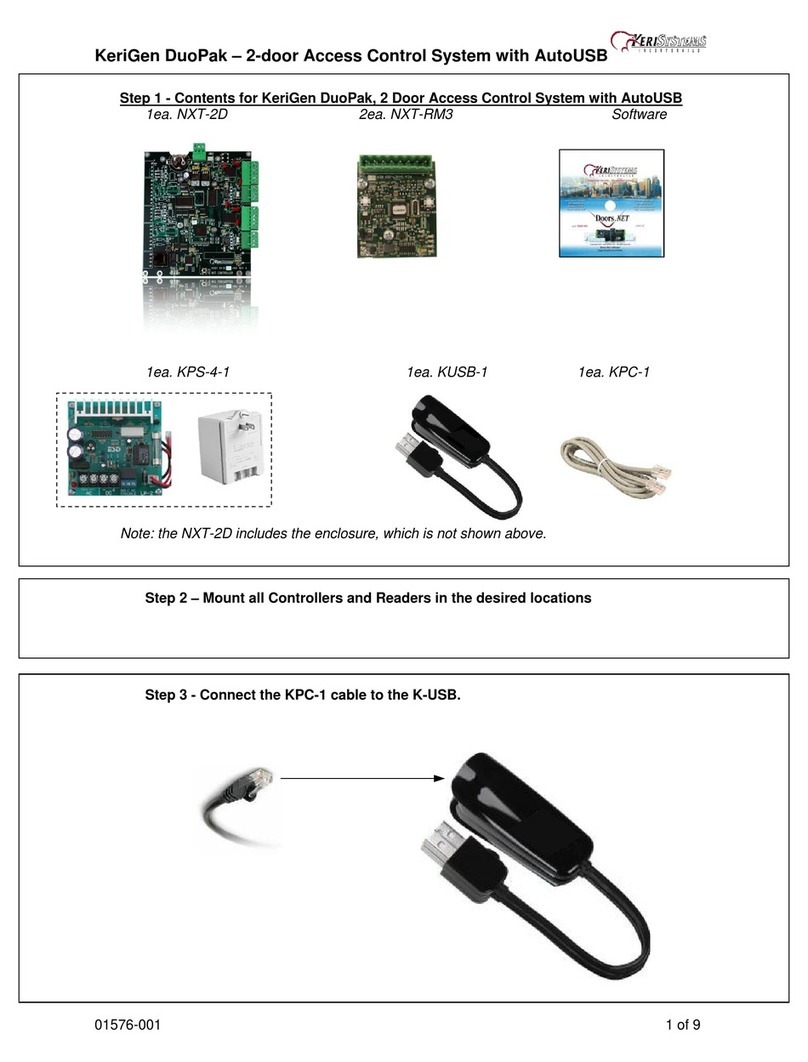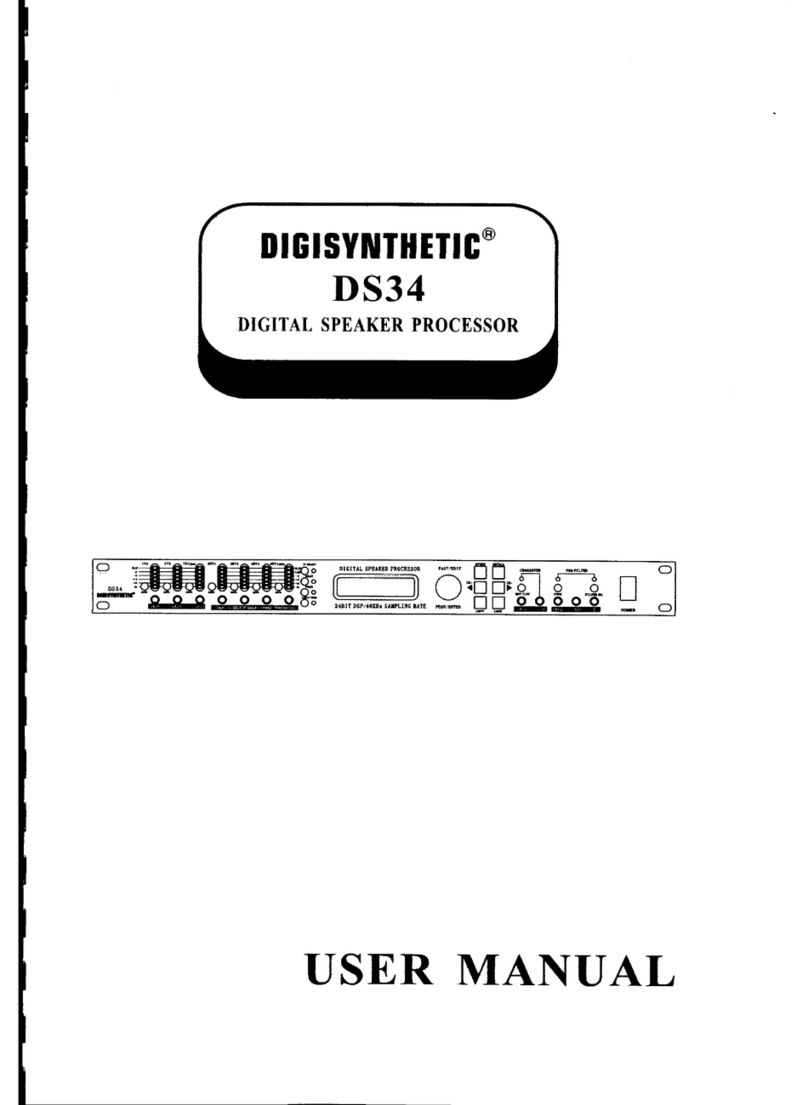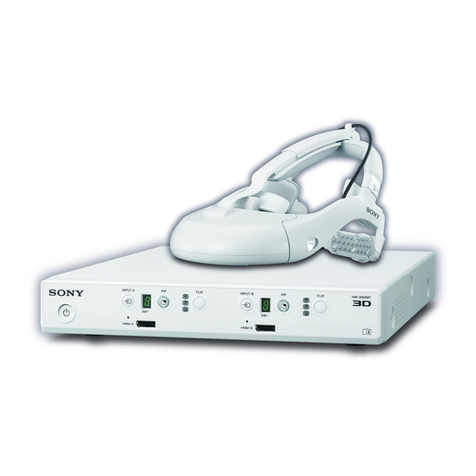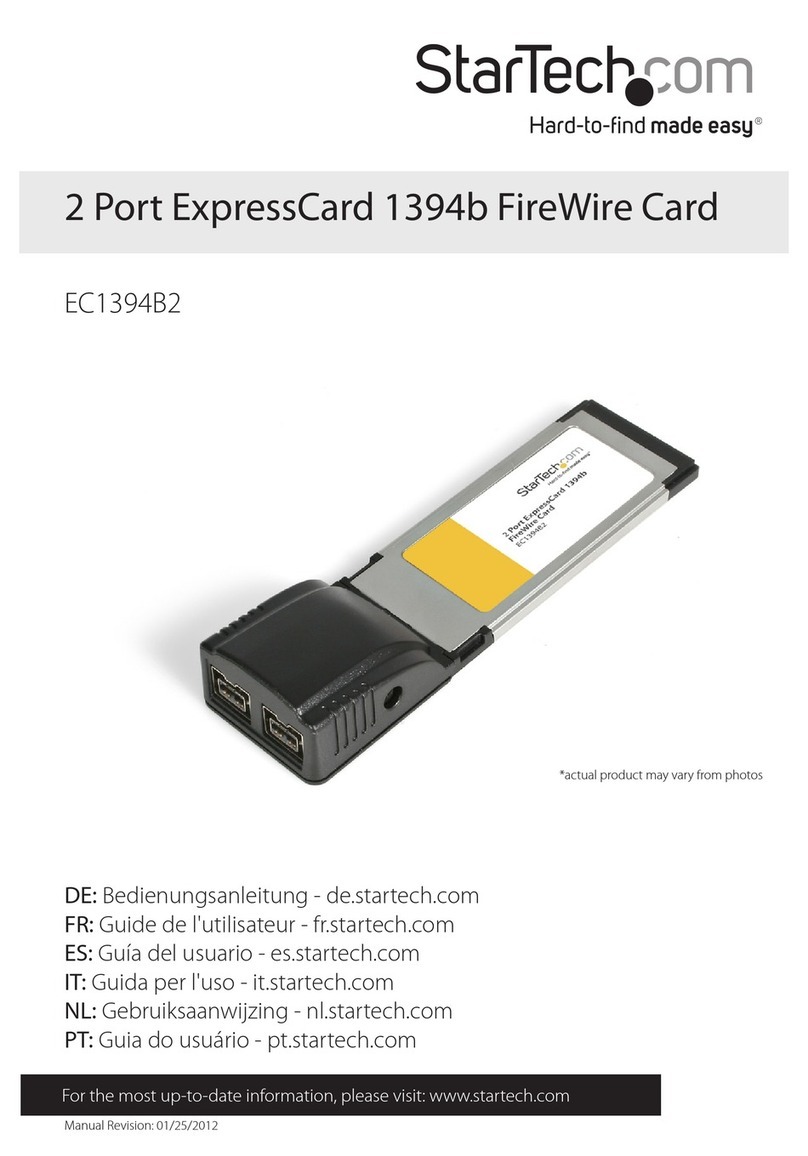KeriSystems SB-593 User manual

SB-593 Satellite Board
Unit 17 Park Farm Industrial Estate 01925-001 Rev. 1.2
Buntingford, Herts SG9 9AZ UK
TEL: 0870 444 7234 FAX: 0870 444 7240
Web: http://www.kerisystems.co.uk E-mail: sales@kerisystems.co.uk Page 1 of 16
SB-593Quick Start Guide
This quick start guide is made up of a specification sheet, basic installation drawings and information, and short
descriptions of key terms and concepts.
NOTE: The SB-593 may be used with either a PXL-250 or a PXL-500/PXL-510.
Figure 1: SB-593 Satellite Board

SB-593 Satellite Board
Unit 17 Park Farm Industrial Estate 01925-001 Rev. 1.2
Buntingford, Herts SG9 9AZ UK
TEL: 0870 444 7234 FAX: 0870 444 7240
Web: http://www.kerisystems.co.uk E-mail: sales@kerisystems.co.uk Page 2 of 16
Quick Start GuideSB-593
1.0 Specifications
Unit Dimensions
• PXL-250/PXL-500/PXL-510 controller PCB with an SB-593 Satellite Board (with or without an LCD-1
Alpha/Numeric Display)
- 7.25 inches high by 6.00 inches wide by 1.75 inches deep, including wiring connectors
- (18.45 cm by 15.25 cm by 4.45 cm)
•Enclosure
- 9.70 inches high by 8.20 inches wide by 2.60 inches deep
- (24.65 cm by 20.85 cm by 6.60 cm)
Operating Temperature/Humidity Range
• 0°F to 140°F (-18°C to 60°C)
• 0% to 90% Relative Humidity, non-condensing
Controller with Satellite Board Power Requirements
• 12 VDC @ 1 Amp
Current Draw
• maximum current draw 270 mA for a controller plus reader current draw (refer to Table 1 for Reader current
draw)
• 120 mA max for a PXL-250/PXL-500/PXL-510 Controller
• 150 mA max for an SB-593 Satellite Board
Output Relay Contact Rating
• 1 Amp @ 24 VDC
Input Device Configuration
• Door Sense normally closed
• Request to Exit normally open
• Global Unlock normally open, or
Auxiliary RTE A-Door normally open
Table 1: Reader Current Draw
Reader Type
MS-3000 MS-4000 MS-5000 MS-7000 MS-9000
Current Draw 50 mA 50 mA 100 mA 200 mA 200 mA

SB-593 Satellite Board
Unit 17 Park Farm Industrial Estate 01925-001 Rev. 1.2
Buntingford, Herts SG9 9AZ UK
TEL: 0870 444 7234 FAX: 0870 444 7240
Web: http://www.kerisystems.co.uk E-mail: sales@kerisystems.co.uk Page 3 of 16
SB-593Quick Start Guide
2.0 Cable Requirements
• two conductor, stranded, AWG 22 or a larger gauge for all input/output connections
NOTE: The Lock Output relay may require a heavier gauge of wire depending upon the current demands of the lock
and the length of the lock wiring run.
3.0 When Installing Satellite Boards
DO
• route cables in accessible areas for ease of maintenance
• add transient suppression across electric devices attached to a satellite board output
• use an isolation relay (Keri Systems P/N IRP-1) if attaching to a parking gate, a turnstile, or any application
using a large electric motor
• for a single door application, install the door's reader to the TB-5, "A" reader connection on the controller
• for a two door application, install the primary door's reader to the TB-5, "A" reader connection on the
controller and install the secondary door's reader to the TB-6, "B" reader connection on the controller
DO NOT
• stretch or over-tension cables
• route cables over sharp objects
• let cables or wires get tangled
4.0 Jumper Setting
JP12 - Configures the Satellite Board (see Figure 2)
• Jumper across JP12, pins 1 and 2, configures the Satellite board for general purpose inputs and outputs.
• NO jumper across JP12 configures the Satellite board for second door control with additional inputs and
outputs. When the Satellite board is configured for second door control, the primary door must be connected to
the "A" reader (TB-5 on the PXL-500/PXL-510 controller board) and the secondary door must be connected to
the "B" reader (TB-6 on the controller board).
Figure 2: Satellite Board Jumper Configuration (JP12)

SB-593 Satellite Board
Unit 17 Park Farm Industrial Estate 01925-001 Rev. 1.2
Buntingford, Herts SG9 9AZ UK
TEL: 0870 444 7234 FAX: 0870 444 7240
Web: http://www.kerisystems.co.uk E-mail: sales@kerisystems.co.uk Page 4 of 16
Quick Start GuideSB-593
5.0 Board Installation
Perform the following steps to install an SB-593 Satellite board on a PXL-250 or PXL-500/PXL-510 controller
(see Figure 3).
1. Turn the controller's power OFF.
2. Line up the upper left-hand corner of the Satellite PCB with the controller PCB.
3. Line up the stand-offs in the top two corners of the Satellite PCB with corresponding mounting holes in the
controller PCB (see Figure 3).
4. Align the Satellite Board’s connector pins to the PXL’s mounting holes.
NOTE: If you are installing the SB-593 (which has two rows of connector pins) on a PXL-250 controller (which has
one row of mounting holes) it does not matter which row of connector pins are inserted in the mounting holes.
5. Gently press the two boards together with each stand-off into its mounting hole and with the connector pins
meshing together with their mounting holes.
6. Turn the controller’s power ON.
7. If the P2 mounting holes have the PXL’s J2 connector pins inserted correctly, the Power LED6 will illuminated
and remain so as long as the connection continues and power is supplied to the unit.
8. If the P3 mounting holes have the PXL’s J3 connector pins inserted correctly, the SDA LED5 will flicker and
continue to do so as long as the connection continues and power is supplied to the unit.
Figure 3: SB-593 Board Installation
6.0 Connecting Wires - Removing a Terminal Block
Figure 4: Connecting Wires to Terminal Blocks

SB-593 Satellite Board
Unit 17 Park Farm Industrial Estate 01925-001 Rev. 1.2
Buntingford, Herts SG9 9AZ UK
TEL: 0870 444 7234 FAX: 0870 444 7240
Web: http://www.kerisystems.co.uk E-mail: sales@kerisystems.co.uk Page 5 of 16
SB-593Quick Start Guide
7.0 The SB-593 Satellite Board Wiring Connections
7.1 Two Door Configuration Connections
This configuration assumes JP12 is OFF, configuring the Satellite board for Two-Door control.
7.1.1 Output Relays
Please refer to Figure 1 on page 1 for output relay wiring locations.
See page 6 for a sample Fail-Safe Door Lock Output Relay drawing.
See page 6 for a sample Fail-Secure Door Lock Output Relay drawing.
See page 6 for a sample Alarm Output Relay drawing.
See page 7 for a sample Door Held Open Alarm – A-Door drawing.
See page 7 for a sample Door Held Open Alarm – B-Door drawing.
See page 8 for a sample General Purpose Output – Normally Open Relay drawing.
See page 8 for a sample General Purpose Output – Normally Closed Relay drawing.
Table 2: Output Relays
TB-7/TB-10 Relay Outputs Description
TB-7 – Pin 1 lock output – normally open line
TB-7 – Pin 2 common/ground
TB-7 – Pin 3 lock output – normally closed line
TB-7 – Pin 4 alarm output – normally open line
TB-7 – Pin 5 common/ground
TB-7 – Pin 6 alarm output – normally closed line
TB-10 – Pin 1 GPO 3/DHO-Ba– normally open line
a. The Door Held Open (DHO) alarm feature is not available in
16-bit Doors software applications.
TB-10 – Pin 2 common/ground
TB-10 – Pin 3 GPO 3/DHO-Ba– normally closed line
TB-10 – Pin 4 GPO 4/DHO-Aa– normally open line
TB-10 – Pin 5 common/ground
TB-10 – Pin 6 GPO 4/DHO-Aa– normally closed line

SB-593 Satellite Board
Unit 17 Park Farm Industrial Estate 01925-001 Rev. 1.2
Buntingford, Herts SG9 9AZ UK
TEL: 0870 444 7234 FAX: 0870 444 7240
Web: http://www.kerisystems.co.uk E-mail: sales@kerisystems.co.uk Page 6 of 16
Quick Start GuideSB-593
7.1.1.1 Fail-Safe Door Lock Output Relay
In a fail-safe application, if the power fails, the door is unlocked (see page 16 for information about fail-safe lock
applications).
Figure 5: Fail-Safe Door Lock Output Relay
7.1.1.2 Fail-Secure Door Lock Output Relay
In a fail-secure application, if the power fails, the door is locked (see page 16 for information about fail-secure lock
applications).
Figure 6: Fail-Secure Door Lock Output Relay
7.1.1.3 Alarm Output Relay
An alarm condition on the controller closes the normally open line, sounding an alarm.
Figure 7: Alarm Output Relay

SB-593 Satellite Board
Unit 17 Park Farm Industrial Estate 01925-001 Rev. 1.2
Buntingford, Herts SG9 9AZ UK
TEL: 0870 444 7234 FAX: 0870 444 7240
Web: http://www.kerisystems.co.uk E-mail: sales@kerisystems.co.uk Page 7 of 16
SB-593Quick Start Guide
7.1.1.4 Door Held Open Alarm Output Relay
These instructions apply if the enhanced alarm out annunciation feature in the Doors software has configured these
outputs for door held open annunciation. The DHO alarm feature is not available in 16-bit Doors software
applications. If you are not using the DHO feature, skip to the General-Purpose Outputs sections on page 8.
An alarm condition on the controller closes the normally open line, sounding an alarm. The following figure is for
the A-door.
Figure 8: Door Held Open Alarm – A-Door
The following figure is for the B-door.
Figure 9: Door Held Open Alarm – B-Door

SB-593 Satellite Board
Unit 17 Park Farm Industrial Estate 01925-001 Rev. 1.2
Buntingford, Herts SG9 9AZ UK
TEL: 0870 444 7234 FAX: 0870 444 7240
Web: http://www.kerisystems.co.uk E-mail: sales@kerisystems.co.uk Page 8 of 16
Quick Start GuideSB-593
7.1.1.5 General Purpose Output - Normally Open Relay Connection
In the following application, an event causes programming in the controller to close the normally-open line,
temporarily turning on a video camera.
Figure 10: General Purpose Output – Normally Open Relay
7.1.1.6 General Purpose Outputs - Normally Closed Relay Connection
In the following application, an event causes programming in the controller to open the normally-closed line,
temporarily turning off a sensor device.
Figure 11: General Purpose Output – Normally Closed Relay

SB-593 Satellite Board
Unit 17 Park Farm Industrial Estate 01925-001 Rev. 1.2
Buntingford, Herts SG9 9AZ UK
TEL: 0870 444 7234 FAX: 0870 444 7240
Web: http://www.kerisystems.co.uk E-mail: sales@kerisystems.co.uk Page 9 of 16
SB-593Quick Start Guide
7.1.2 Inputs Table
Please refer to Figure 1 on page 1 for output relay wiring locations.
• See page 10 for a sample Door Status Switch Input drawing.
• See page 10 for a sample Request to Exit (RTE) Input drawing.
• See page 11 for a sample Auxiliary RTE Input drawing.
• See page 11 for sample General Purpose Input drawings.
Table 3: Inputs
TB-8/TB-9 Inputs Description
TB-8 – Pin 1 door status switch input – normally closed
TB-8 – Pin 2 common/ground
TB-8 – Pin 3 RTE input – normally open
TB-8 – Pin 4 GPI 3 inputa/ AUX RTE-Bbinput – normally open
a. General Purpose inputs can accept either a normally closed or
normally open signal. The type of signal depends upon the type
of input device. The Doors software is then programmed to
accept that type of input.
b. The Auxiliary RTE input feature is not available in 16-bit Doors
software applications.
TB-8 – Pin 5 common/ground
TB-8 – Pin 6 GPI 4 inputa
TB-9 – Pin 1 GPI 5 inputa
TB-9 – Pin 2 common/ground
TB-9 – Pin 3 GPI 6 inputa
TB-9 – Pin 4 GPI 7 inputa
TB-9 – Pin 5 common/ground
TB-9 – Pin 6 GPI 8 inputa

SB-593 Satellite Board
Unit 17 Park Farm Industrial Estate 01925-001 Rev. 1.2
Buntingford, Herts SG9 9AZ UK
TEL: 0870 444 7234 FAX: 0870 444 7240
Web: http://www.kerisystems.co.uk E-mail: [email protected] Page 10 of 16
Quick Start GuideSB-593
7.1.2.1 Door Status Switch Input
A door status switch opens and closes as the door is opened and closed.
Figure 12: Door Status Switch Input
NOTE: If a door switch is not installed, a jumper must be installed across pins 1 and 2 of TB8 to prevent a
continuous door open alarm from being reported by the controller.
7.1.2.2 Request to Exit (RTE) Input
In an RTE circuit a user presses a switch (completing the circuit) to inform the controller that the user wishes to exit
through the door associated with that controller.
Figure 13: Request to Exit Input

SB-593 Satellite Board
Unit 17 Park Farm Industrial Estate 01925-001 Rev. 1.2
Buntingford, Herts SG9 9AZ UK
TEL: 0870 444 7234 FAX: 0870 444 7240
Web: http://www.kerisystems.co.uk E-mail: sales@kerisystems.co.uk Page 11 of 16
SB-593Quick Start Guide
7.1.2.3 Auxiliary Request to Exit (RTE) Input
In an auxiliary RTE circuit a user presses a switch (completing the circuit) to inform the controller that the user
wishes to exit through the door associated with that controller. The Auxiliary RTE input feature is not available in
16-bit Doors software applications.
Figure 14: Auxiliary Request to Exit Input
7.1.2.4 General Purpose Inputs
For the application in Figure 15, a circuit is opened to create an input event at the controller.
Figure 15: General Purpose Input – TB-8
For the application in Figure 16, the motion detector senses motion and closes a circuit to create an input event at
the controller.
Figure 16: General Purpose Input – TB-9

SB-593 Satellite Board
Unit 17 Park Farm Industrial Estate 01925-001 Rev. 1.2
Buntingford, Herts SG9 9AZ UK
TEL: 0870 444 7234 FAX: 0870 444 7240
Web: http://www.kerisystems.co.uk E-mail: [email protected] Page 12 of 16
Quick Start GuideSB-593
7.2 General Purpose Input/Output Configuration Connections for Doors
This configuration assumes JP12 is ON configuring the Satellite board for general purpose inputs and outputs.
7.2.1 Output Relays Table
Please refer to Figure 1 on page 1 for output relay wiring locations.
• See page 13 for a sample General Purpose Output – Normally Closed Relay drawing.
• See page 13 for a sample General Purpose Output – Normally Open Relay drawing.
Table 4: Output Relays
TB-7/TB-10 Relay Outputs Description
TB-7 – Pin 1 GPO 1 – normally open line
TB-7 – Pin 2 common/ground
TB-7 – Pin 3 GPO 1 – normally closed line
TB-7 – Pin 4 GPO 2 – normally open line
TB-7 – Pin 5 common/ground
TB-7 – Pin 6 GPO 2 – normally closed line
TB-10 – Pin 1 GPO 3 – normally open line
TB-10 – Pin 2 common/ground
TB-10 – Pin 3 GPO 3 – normally closed line
TB-10 – Pin 4 GPO 4 – normally open line
TB-10 – Pin 5 common/ground
TB-10 – Pin 6 GPO 4 – normally closed line

SB-593 Satellite Board
Unit 17 Park Farm Industrial Estate 01925-001 Rev. 1.2
Buntingford, Herts SG9 9AZ UK
TEL: 0870 444 7234 FAX: 0870 444 7240
Web: http://www.kerisystems.co.uk E-mail: sales@kerisystems.co.uk Page 13 of 16
SB-593Quick Start Guide
7.2.1.1 General Purpose Outputs – Normally Closed Relay Connection
In the following application, an event causes programming in the controller to open the normally-closed line,
temporarily turning off a sensor device.
Figure 17: General Purpose Output – Normally Closed Relay
7.2.1.2 General Purpose Outputs - Normally Open Relay Connection
In the following application, an event causes programming in the controller to close the normally-open line,
temporarily turning on a video camera.
Figure 18: General Purpose Output – Normally Open Relay

SB-593 Satellite Board
Unit 17 Park Farm Industrial Estate 01925-001 Rev. 1.2
Buntingford, Herts SG9 9AZ UK
TEL: 0870 444 7234 FAX: 0870 444 7240
Web: http://www.kerisystems.co.uk E-mail: [email protected] Page 14 of 16
Quick Start GuideSB-593
7.2.2 Inputs Table
Please refer to Figure 1 on page 1 for input wiring locations.
• See page 15 for a sample General Purpose Input drawing.
Table 5: Inputs Table
TB-8/TB-9 Inputs Description
TB-8 – Pin 1 GPI 1a
a. General Purpose inputs can accept either a
normally closed or normally open signal. The type
of signal depends upon the type of input device.
The Doors software is then programmed to accept
that type of input.
TB-8 – Pin 2 common/ground
TB-8 – Pin 3 GPI 2a
TB-8 – Pin 4 GPI 3a
TB-8 – Pin 5 common/ground
TB-8 – Pin 6 GPI 4a
TB-9 – Pin 1 GPI 5a
TB-9 – Pin 2 common/ground
TB-9 – Pin 3 GPI 6a
TB-9 – Pin 4 GPI 7a
TB-9 – Pin 5 common/ground
TB-9 – Pin 6 GPI 8a

SB-593 Satellite Board
Unit 17 Park Farm Industrial Estate 01925-001 Rev. 1.2
Buntingford, Herts SG9 9AZ UK
TEL: 0870 444 7234 FAX: 0870 444 7240
Web: http://www.kerisystems.co.uk E-mail: sales@kerisystems.co.uk Page 15 of 16
SB-593Quick Start Guide
7.2.3 General Purpose Inputs
For the application in Figure 19, a circuit is opened to create an input event at the controller.
Figure 19: General Purpose Input – TB-8
For the application in Figure 20, the motion detector senses motion and closes a circuit to create an input event at
the controller.
Figure 20: General Purpose Input – TB-9

SB-593 Satellite Board
Unit 17 Park Farm Industrial Estate 01925-001 Rev. 1.2
Buntingford, Herts SG9 9AZ UK
TEL: 0870 444 7234 FAX: 0870 444 7240
Web: http://www.kerisystems.co.uk E-mail: [email protected] Page 16 of 16
Quick Start GuideSB-593
8.0 General Information on Inputs
A controller input detects a state change generated by a device outside the controller that may prompt a response
from the controller. Input devices that generate a state change may be normally-closed or normally-open. This
section provides a brief description of normally-closed versus normally-open inputs.
8.1 Normally-Closed
A normally-closed input device continually keeps a circuit active or complete. A state change is generated when
the normally-closed input device is forced open, breaking the circuit. In an access control system, a door switch is a
typical example of a normally-closed device. While the door remains closed, the switch remains closed. When
someone opens the door, the door switch is opened, breaking the circuit and generating a state change. The
controller then responds to the state change and generates an output (such as sounding an alarm if the door is a
secure door).
8.2 Normally-Open
A normally-open input device continually leaves a circuit open, or incomplete. A state change is generated when
the normally-open input device is forced closed, completing the circuit. In an access control system, a request-to-
exit (RTE) button is a typical example of a normally open device. In an access control installation, an RTE button is
located on the secure side of a door. While there is no one there pressing the button, the switch remains open. When
someone desires to exit through a secure door, they press the RTE button, closing the circuit and generating a state
change. The controller then responds to this state change and generates an output (such as unlocking the door to
allow egress).
9.0 General Information on Safety versus Security with Door
Locks
When installing a door lock there are two things to consider: safety versus security, or should the door be "fail-safe"
or "fail-secure."
9.1 Fail-Safe Door Lock
Fail-safe means that if the power should fail at a door (perhaps due to a power outage or equipment failure), the
door will automatically unlock allowing entrance or egress. Power is required to keep the door locked. A fail-safe
door ensures people will be able to enter and exit a secured area through that door in the case of an emergency. A
typical fail-safe application may use a magnetic lock. In this application, the controller energizes the lock relay,
causing the lock relay to change its state. In its new state the normally-closed circuit is opened breaking the power
to the magnetic lock and allowing the door to be opened.
9.2 Fail-Secure Door Lock
Fail-secure means that if the power should fail at a door (perhaps due to a power outage or equipment failure), the
door will automatically lock and not allow entrance, but will continue to allow egress. Power is required to unlock
the door. A fail-secure door ensures a secured area remains secure regardless of the situation. A typical fail-secure
application may use a door strike. In this application, the controller energizes the lock relay, causing the lock relay
to change its state. In its new state the normally-open circuit is closed activating the release mechanism for the door
strike on the door to be opened.
Table of contents
Other KeriSystems Computer Hardware manuals
Popular Computer Hardware manuals by other brands
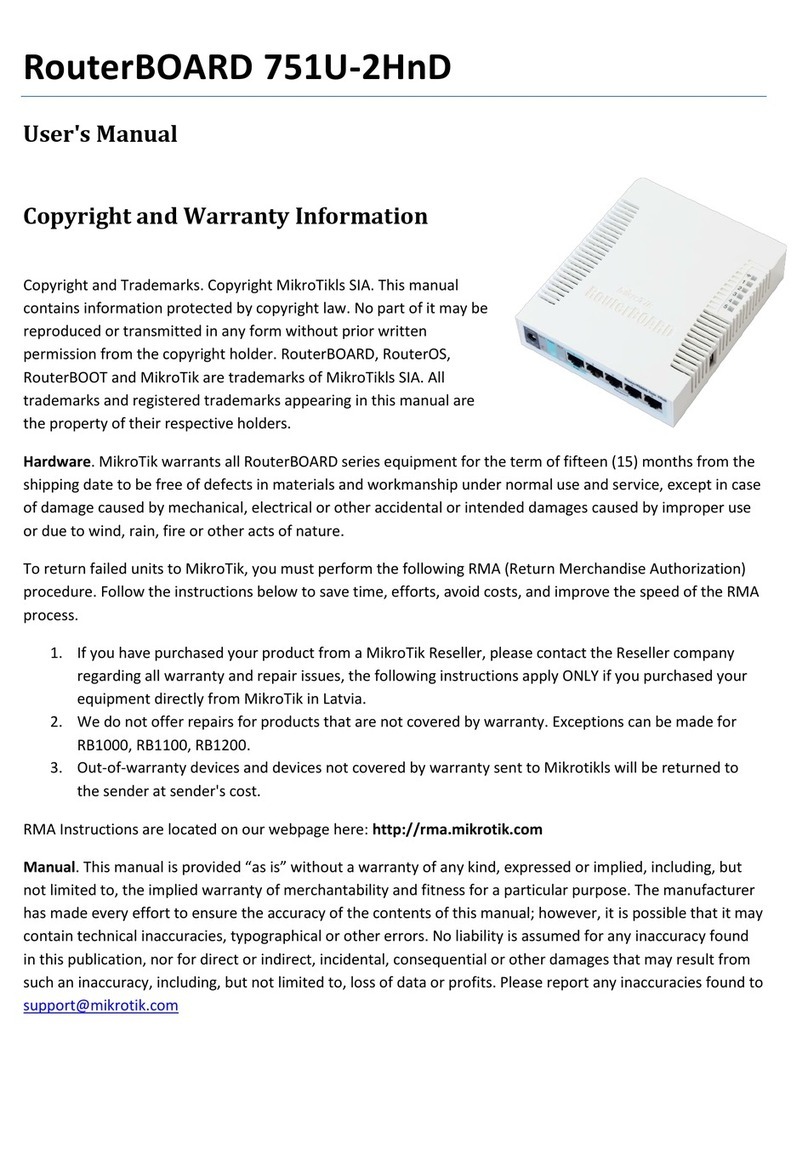
MikroTik
MikroTik RouterBOARD 751U-2HnD user manual
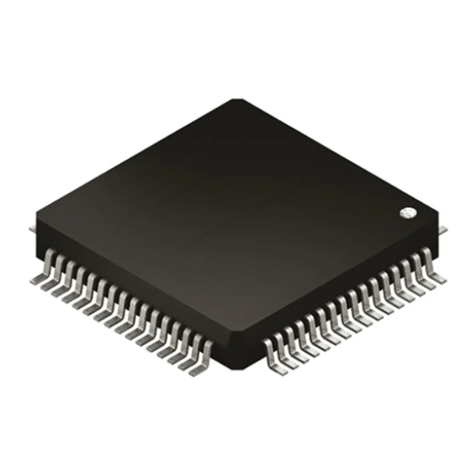
STMicroelectronics
STMicroelectronics RM0365 Reference manual

Meinberg
Meinberg IMS-VSG181H Setup guide
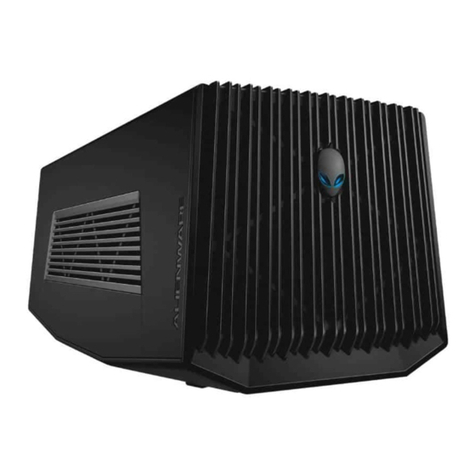
Dell
Dell Alienware Graphics Amplifier user guide

ETC
ETC Power Control Processor Configuration manual
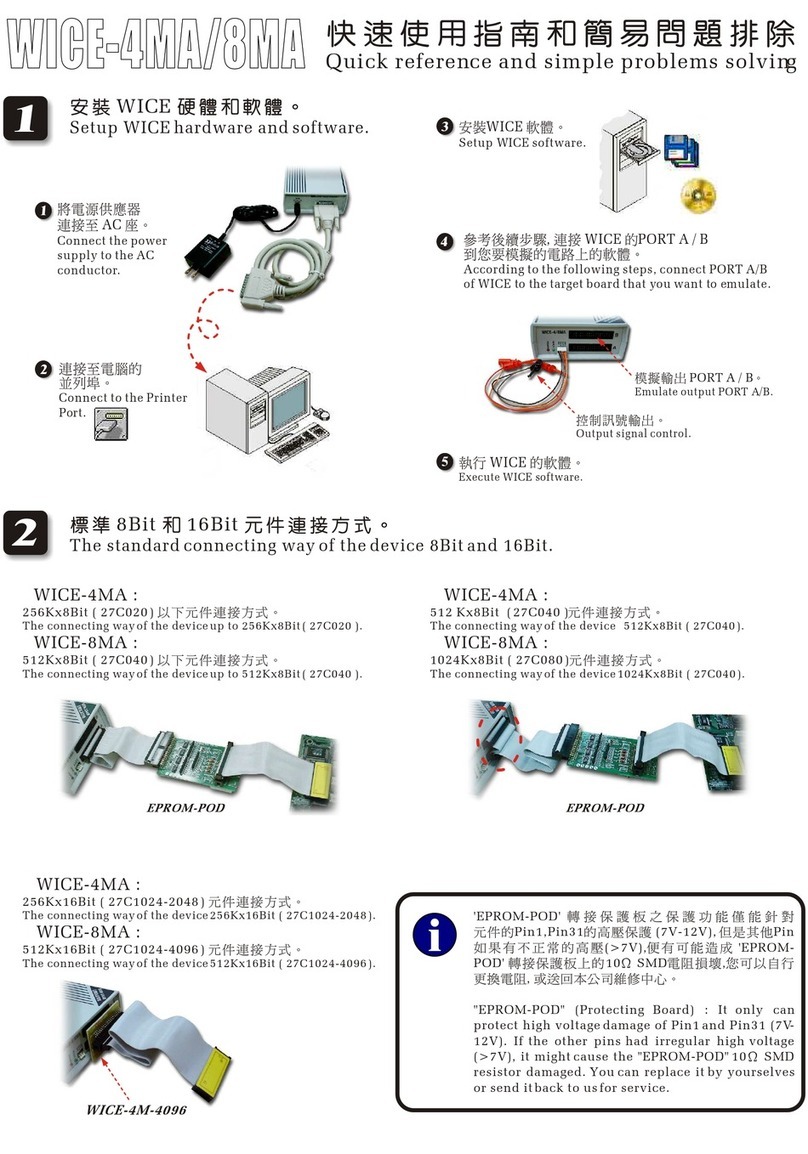
LEAP Electronics
LEAP Electronics WICE-4MA quick reference

BE QUIET!
BE QUIET! PURE ROCK SLIM manual
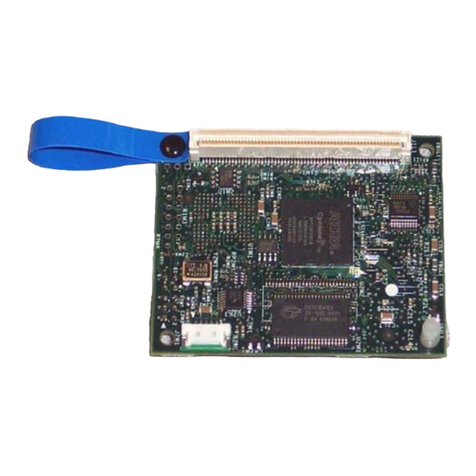
Intel
Intel SC5300AF2 - Server Platform - 0 MB RAM Installation and user guide
Freescale Semiconductor
Freescale Semiconductor FRDM-STBC-SA9500 Quick reference card
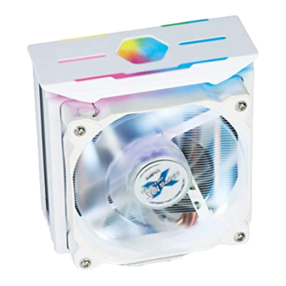
ZALMAN
ZALMAN OPTIMA II CNPS10X user manual

SeaLevel
SeaLevel SIO4-104.485 user manual
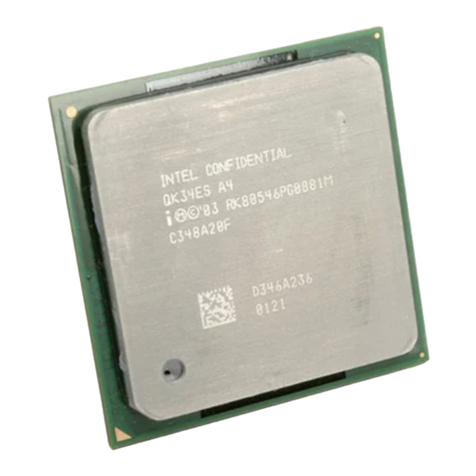
Intel
Intel SL8K2 - Pentium 4 3.20EGHz 800MHz 1MB Socket 478... specification
